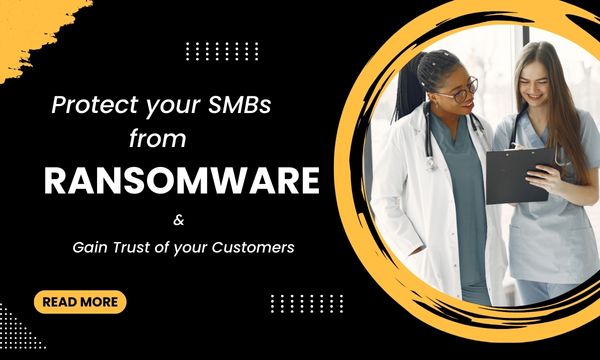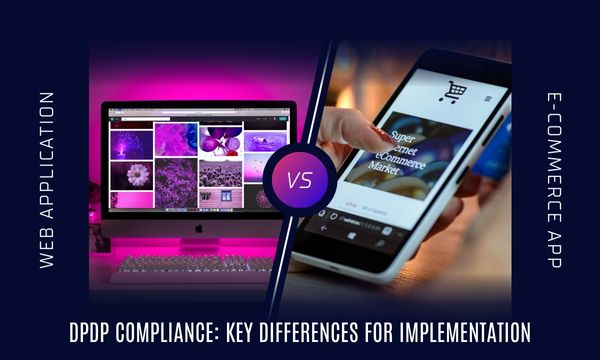
In the world of small and medium-sized businesses (SMBs), cybersecurity can often feel like an overwhelming task reserved for large corporations with dedicated IT departments. Yet, the stark reality is that SMBs are prime targets for ransomware attacks. The increasing frequency and sophistication of these attacks make it crucial for businesses of all sizes to fortify their defences and prepare for potential breaches. So, how can you protect your SMB from ransomware, and what steps should you take if the unthinkable happens? Let’s delve into this pressing issue.
Understanding the Threat: Why SMBs Are Prime Targets?
Imagine a situation where you come into the office one morning, turn on your computer, and are greeted by a message demanding a hefty ransom to regain access to your critical data. This nightmare scenario is a reality for many SMBs worldwide. Recent studies show that 60% of SMBs close within six months of a cyber attack. The question is, why are SMBs such appealing targets?
* Limited Resources: SMBs often lack the extensive IT infrastructure and cybersecurity budgets of larger companies, making them easier targets.
* Valuable Data: Even small businesses hold valuable data, including customer information, financial records, and proprietary business information.
* Complacency: Many SMBs operate under the false assumption that they are too small to be targeted, leading to lax security measures.
Proactive Measures: Building a Fortress Against Ransomware
The key to protecting your business lies in taking proactive steps to prevent ransomware attacks. Here’s how you can build a fortress around your SMB:
1. Regular and Reliable Backups
Consider a healthcare clinic with thousands of patient records. An attack could paralyze the operations, but regular backups ensure quickly restoring the data without succumbing to ransom demands. Schedule automatic backups and store them both offsite and offline. Regularly test the backups to ensure they can be restored swiftly and effectively.
2. Robust Multi-Factor Authentication (MFA)
Consider the case of a small financial advisory firm that avoided a potential disaster simply because it used MFA. Even if attackers obtain login credentials, MFA acts as an additional barrier, making it significantly harder for them to access sensitive systems. Implement MFA across all critical accounts and systems.
3. Continuous Software Updates
Remember the infamous WannaCry attack? It exploited a known vulnerability in outdated Windows systems. Regularly updating software, including security patches, can protect your business from such exploits. Enable automatic updates wherever possible to stay ahead of potential threats.
4. Employee Training and Awareness
A phishing email was the entry point for the ransomware attack on a small manufacturing company. Regular training sessions can educate employees about recognizing phishing attempts, avoiding suspicious downloads, and adhering to best security practices. Consider using simulated phishing attacks to test and improve their awareness.
5. Advanced Security Solutions
Invest in advanced endpoint protection, firewall, and intrusion detection systems. A small retail business avoided a major breach thanks to its robust security infrastructure that detected and neutralized the threat before it could spread.
Reactive Measures: Responding to a Ransomware Attack
Despite the best efforts to prevent an attack, breaches can still happen. How you respond can significantly influence the outcome and your ability to rebuild trust. Here's a step-by-step guide for effectively managing a ransomware attack:
1. Immediate Containment and Assessment
* Swift Action: The moment you detect an attack, act fast to contain it. Disconnect affected systems from the network to stop the ransomware from spreading further. This step is critical in preventing additional damage.
* Engage Experts: Bring in cybersecurity experts to conduct a thorough assessment. They can identify the ransomware variant, determine the extent of the breach, and provide guidance on the best course of action. Quick containment and expert analysis can save your business from further harm.
2. Transparent Communication
* Inform Stakeholders: Transparency is key. Inform all affected parties, including employees, customers, and partners, about the breach as soon as possible. Explain what happened, what data might be at risk, and what steps are being taken to address the issue.
* Regular Updates: Keep stakeholders informed with regular updates throughout the recovery process. This shows that you are handling the situation responsibly and are committed to resolving the issue.
3. Remediation and Recovery
* Eradicate the Threat: Work with your cybersecurity team to completely remove the ransomware from your systems. This may involve wiping infected devices and restoring them from clean backups.
* Restore Data: Use your clean backups to restore lost data. Ensure that the backups are free of malware before restoring. If you don't have recent backups, you may need to negotiate with the attackers, though this is risky and not recommended.
* Strengthen Security: Analyze how the ransomware infiltrated your systems and address the vulnerabilities. This might involve updating software, changing passwords, and enhancing network security protocols to prevent future attacks.
Rebuilding Trust: A Continuous Effort
Once the immediate crisis is managed, focus on rebuilding trust with your clients and stakeholders. This involves showing that you are taking significant steps to prevent future incidents and that you value the safety and security of their data.
1. Apologize and Assist
* Sincere Apology: Offer a genuine apology to those affected by the attack. Acknowledge the inconvenience and potential harm caused, and express your commitment to resolving the situation.
* Provide Support: Offer services such as credit monitoring for affected customers to help them safeguard against potential misuse of their data. This shows that you care about their security and are taking proactive measures to assist them.
2. Demonstrate Security Improvements
* Communicate Enhancements: Clearly outline the security improvements you have made since the attack. This could include new security technologies, updated policies, and increased employee training.
* Third-Party Audits: Consider having third-party security audits conducted and share the results with stakeholders. This adds credibility to your efforts and reassures clients that your systems are now more secure.
3. Maintain Open Communication
* Regular Updates: Keep the lines of communication open with your clients and stakeholders. Provide regular updates on your security measures and any further improvements you are making.
* Engage with the Community: Participate in industry forums, cybersecurity conferences, and community events to show your ongoing commitment to security. This helps to rebuild your reputation and demonstrates that you are staying informed about the latest threats and best practices.
Standing Strong Against Ransomware
The fight against ransomware is an ongoing battle. By taking proactive steps to secure your business and preparing a robust response plan, you can minimize the impact of potential attacks. In the unfortunate event of a breach, transparency, swift action, and a commitment to improved security can help rebuild trust with clients and stakeholders.
Remember, cybersecurity isn’t just a technical issue; it’s a business imperative. Stay vigilant, stay informed, and ensure your SMB stands strong against the ever-evolving threats of the digital age.



